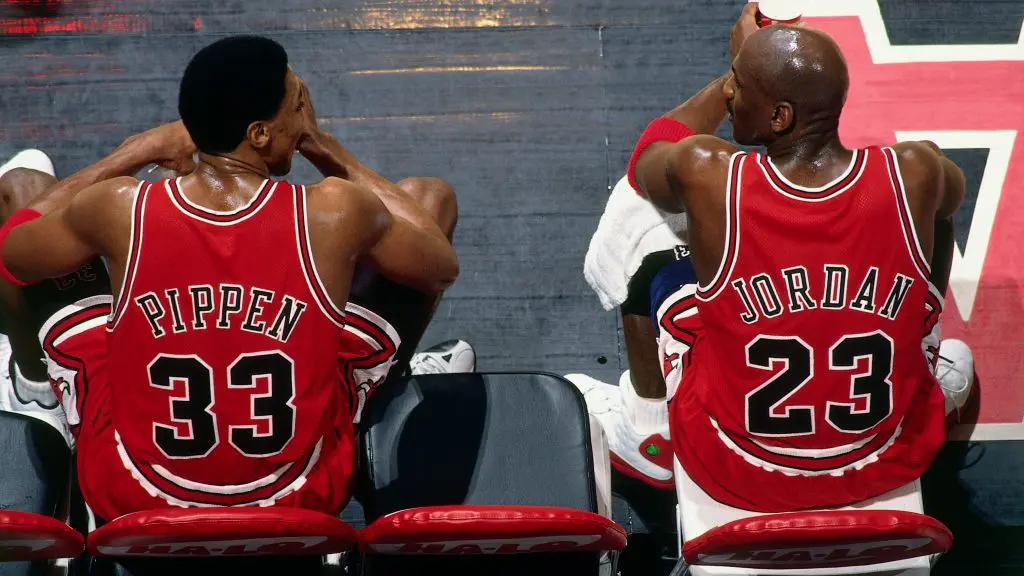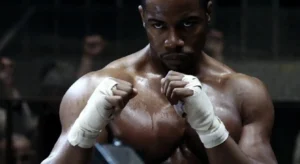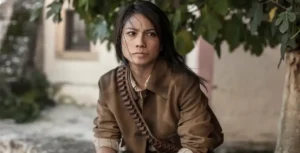Summary
The Last Dance Episode 5 & 6 continue the series in fine form, this time giving us a closer look at some of the off-court events that shaped the evolution of Michael Jordan with a focus on his development into a global brand and media figure.
This recap of The Last Dance Episode 5 and The Last Dance Episode 6 contains spoilers. You can check out our thoughts on the previous two episodes by clicking these words.
The latest pair of episodes for the Last Dance are here and having spent the first four introducing us to the key players involved in the story of Jordan’s career, The Last Dance Episode 5 and The Last Dance Episode 6 focus more on some of the off-court incidents that shaped events.
The Last Dance Episode 5 follows a similar format to the previous installments with the timeline shifting from 97/98 back to earlier points in Jordan’s career, this time focusing on what for me is one of the most interesting aspects of the man: the formation and development of ‘brand Jordan’.
The chances are, even if you are not familiar with Jordan’s achievements on the court, I would wager that you are familiar with the brand Air Jordan and the partnership with Nike. The story takes us back to 1988 where a young Jordan has entered the league and made a splash, looking around the marketplace for endorsements. Jordan’s agent spots an opportunity for a partnership with up and coming shoe manufacturer, Nike. At the time Nike was known best for it’s running shoe line and was not really considered as much else. In fact, Jordan would have preferred a deal with Nike’s long-time rival, Adidas, but such was the level of investment Nike was willing to make in the young star he signed up.
The rest, as they say, is history. Jordan and Nike went on to create one of the first truly global athlete/apparel relationships, with the two becoming indivisible from one another. For me, the most interesting aspect of this brand partnership is the way in which it permeates popular culture to such a degree that wearing the latest Jordan’s becomes a plot point in a Spike Lee’s movies, in rap music and on TV shows; moving it away from the court and into the cultural zeitgeist. With this huge commercial success, however, comes the risk of appearing polarising to consumers who might want to buy Nike shoes. Jordan drew some criticism from the Black community for failing to throw his weight behind black candidates in elections, most notably the senatorial campaign of Harvey Gannt, stating instead that ‘Republicans buy sneakers too’.
Along with this development, The Last Dance Episode 5 explores Jordan’s involvement in the 1992 Barcelona Olympics with the Dream Team. This episode is notable in that it helps to demonstrate Jordan’s ruthlessness when it comes to his own personal relationships.
Firstly, it is implied that Isiah Thomas was not picked for the dream team because of the personal feud he had with Jordan, something Jordan refutes, citing Thomas’ feud with more or less everyone in the NBA too as the reason he was not selected.
It is, however, the battle in the games with Croatian forward Tony Kukoc that is most revealing about the ruthlessly competitive nature of Jordan. Kukoc was at the time of the games a coveted acquisition for Bulls GM Jerry Krause (him again!). In order to prove the point that Kukoc was no better than what the Bulls already had at their disposal, Jordan and Scottie Pippen led the team in attempting to humiliate a bemused Kukoc on the court and in turn, humiliate their GM. It is interesting that Kukoc himself seemingly had done nothing to deserve this treatment and then went on to have a long career with the Bulls in the end, after all, grudgingly earning the respect of Jordan for his grit on the court.
The Last Dance Episode 6 gives us just as much to chew on with the focus mostly on speculation about Jordan’s gambling habits. The timeline takes us back to 1993, with the Bulls zeroing in on their first ‘three-peat’, a third consecutive NBA championship. Securing this would elevate this team from being one of the best teams to becoming one of the great teams. For Jordan to lead the team to this achievement would also further secure his status as one of the greatest players to ever play the game.
His enhanced profile as a global brand and his dominance on the court makes Jordan a target for media scrutiny. At this time, Jordan’s gambling habits come into focus. As a multi-millionaire, Jordan had plenty of cash to play with and his unrelenting competitive nature gives him plenty of opportunities to rack up some sizable gambling bills. The type of bills that might make yours and my eyes’ water but for someone with the disposable income of Jordan is a drop in the ocean. However, the bills grab headlines as the media seize upon the first tangible character flaw they can find in ‘Air Jordan’.
There is some great footage in The Last Dance Episode 6 exploring Jordan’s relationship not only with gambling but with competition. There is a great sequence where when asked if he has a gambling problem he responds flatly, “No, I have a competition problem”. This is illustrated by footage of Jordan playing dice with some Bulls’ employees seemingly for quite minor stakes; when he loses he is visibly annoyed, not at losing the cash but just at losing in general.
The additional media scrutiny, however, starts to take its toll on Jordan and despite winning his 3rd consecutive championship with Bulls he appears tired and a little exasperated by the experience. Perhaps laying the ground for future antipathy with the game and media attention he receives. It is interesting that the feeling of winning the championship is described more like relief than anything. It appears, what marks out the best competitors is not their desire to win per se, rather it is their hatred of losing.
Once again, The Last Dance continues to be must-watch TV providing incredible insight into the life and mindset of global icon and flawed human being.




